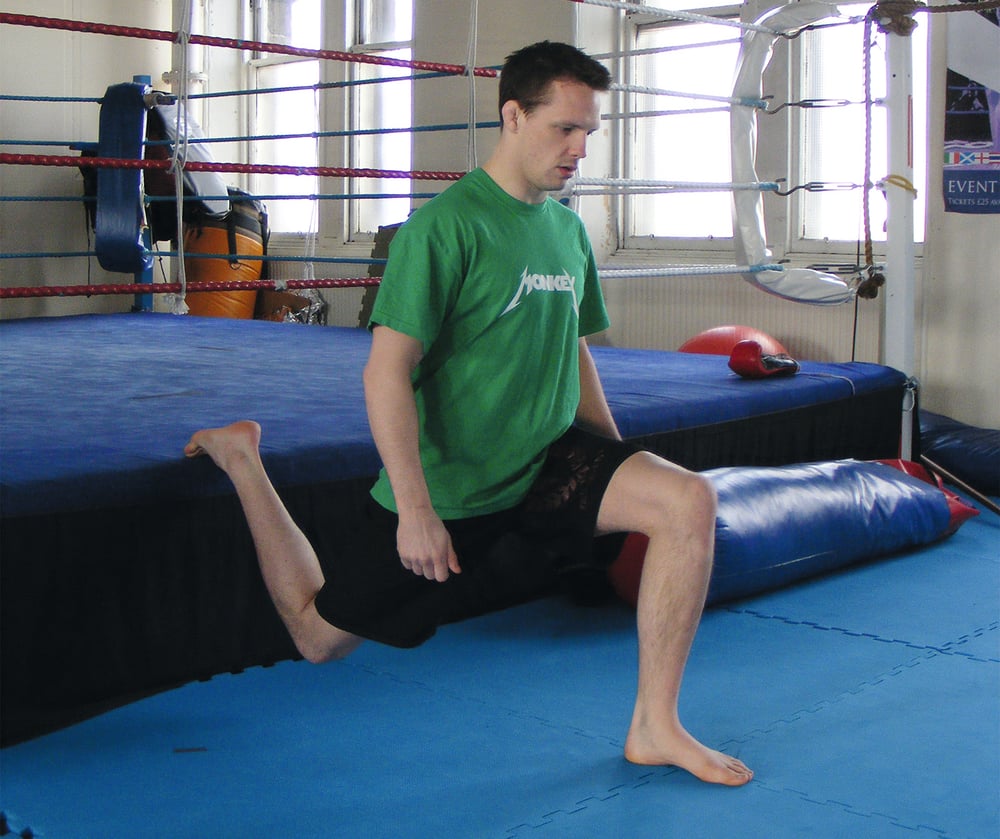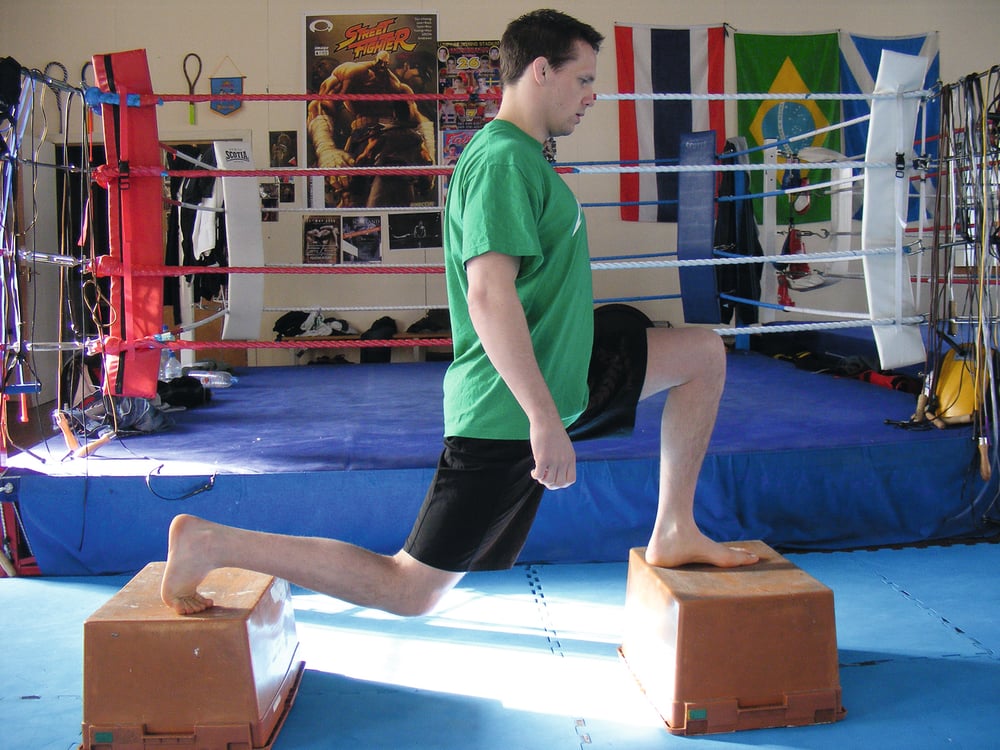
Issue 051
June 2009
An alternative to static stretching, by Paul McVeigh.
Martial arts types have been practicing stretching forever, and rightly so. According to the late strength and conditioning genius, Mel Siff, here are some of the benefits of static stretching:
Increase in the range of useful movement
- Reduction in the incidence of injury
- Decrease in the severity of injury
- Delay in the onset of muscular fatigue
- Prevention and alleviation of muscle soreness after exercise
- Increase in the level of skill and muscular efficiency
- Prolongation of sporting life
(from Supertraining, Siff, 2000)

Logistical problems with static stretching
Go on admit it. We all know we should do more stretching to restore tissue length after working out, reduce muscle soreness and improve range of motion, blah, blah, blah.
How many of us actually do? From personal experience, I know that if I don’t do some stretching my ability to move is off, and my performance suffers. The problem is that stretching is usually the last thing I want to do. I find it difficult to do upper-body stretches, and I’d rather be punching someone or grappling. How many classes have you been to where a coach will give the guys ten minutes at the end of class to stretch out, only to be left talking to an empty room?

EQIs as an alternative
Eccentric Quasi Isometrics (EQIs) may be a better alternative to static stretching. There is a lot of debate about the effectiveness of static stretching as a means of improving performance in sport. With this article I will focus more on the benefits of EQIs and leave this debate for another time.
The eccentric part indicates that the muscle is lengthening under tension, and the quasi isometric part lets us know that this is happening very slowly. To make things clearer here is an example. Go into the bottom of a push-up position with your hands elevated on something. Now stay there, contracting your muscles maximally to maintain this position and prevent movement. Over time you will fatigue and sink deeper towards the ground. This is where the magic happens.

Benefits
As the muscle is being stretched in an active state we develop a better range of motion than with static stretching. This is where I should start mentioning EQIs effect on the series elastic component of muscle, versus the static stretching effect on the parallel elastic component. But as no one cares, I’ll put it down to tiny little elves inside your limbs working their pixie magic as you perform EQIs. This EQI pixie magic develops greater active range of motion when compared to static stretching. Active range of motion is the essence of sport.
As your muscles are lengthening under tension, not only are they being stretched, but they are also developing strength at these extreme ranges of motion. This is great for when you end up in some gnarly positions when grappling or wrestling. Having this extra diesel is a great way to monkey your way out of submissions and prevent injuries.

During each EQI, very little blood can enter the contracting muscle. This leads to a build-up of metabolic by-products. Not only does this enhance tolerance to these metabolites, it also hurts like shit, which is probably good for developing tougher athletes. Improved resistance to local muscular fatigue and Terminator-like toughness? That sounds like it could be useful for a professional fighter, right?
After an EQI is completed, the contracted muscle relaxes and is flooded with blood. Hopefully this blood carries nutrients to the fatigued muscle. To ensure this happens, try taking your post-workout shake 15 minutes before you begin your EQIs. This should aid your recovery.

The very fact that EQIs suck so much is helpful from a compliance standpoint. I know that doesn’t sound right, but MMA athletes make very little sense. They do horrible cardio routines, then they go get kicked in the head all day long and leave out all the easy beneficial stuff like stretching, foam rolling and post-workout nutrition.
EQIs hurt (a lot, if preformed correctly). Therefore an MMA fighter is more likely to do them in my experience. Get a group of guys performing a Bulgarian split squat EQI. Make it competitive and reap the benefits of enhanced hip mobility, and bully whoever quits first.

Duration and examples
Depending on the exercise, the loading, and the experience of the athlete, around one to three minutes seems to be ideal. It is important to stress at this point that perfect technique must be maintained during all these exercises. If it starts to look ropey, can it.
Some EQI positions to play with:
- Push-up
- Dumbbell pull over
- Dumbbell fly
- Goblet squat
- Split squat
- Bulgarian split squat
Static stretching has its place, but as I have hopefully illustrated above, EQIs rock for the fighter. Throw some EQIs in at the end of your workouts and see if you notice the difference. It is not like you were spending your time stretching post-workout anyway!
Paul McVeigh is a sports scientist, professional fighter, Cage Warriors champion and is ranked the number one bantamweight fighter in Europe. He fights out of the Dinky Ninjas Fight Team in Glasgow, Scotland
...









